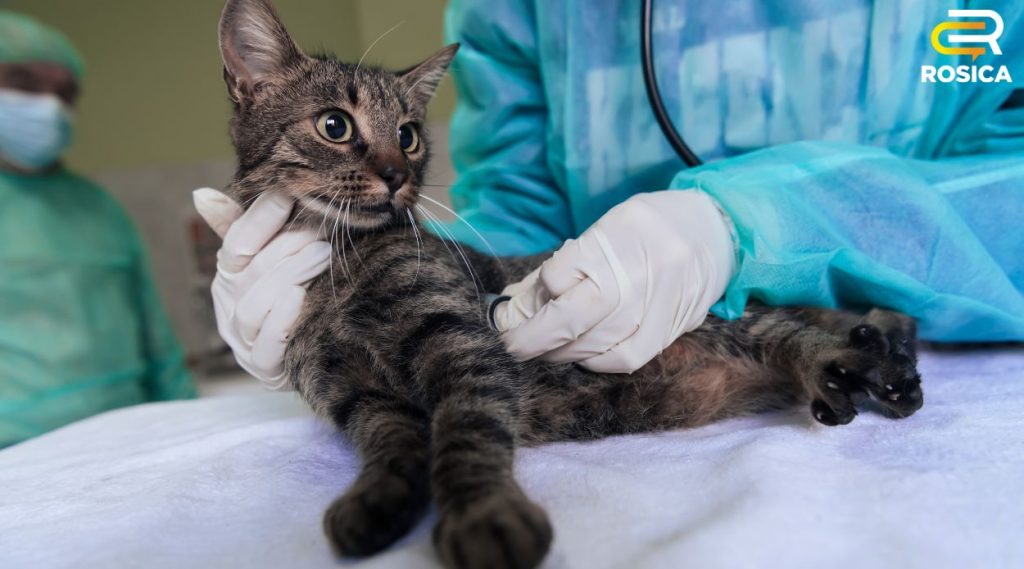The animal health industry is evolving rapidly, fueled by increased pet ownership, innovations in veterinary medicine, and growing consumer demand for pet wellness products and services. Whether you’re a veterinary practice, pet product manufacturer, animal health concern, or diagnostics company, standing out in a crowded marketplace requires more than a great product or service; it demands clear, credible communication.
That’s where content marketing comes in. More than just a buzzword, content marketing is a strategic, long-term investment that builds trust with pet owners, veterinary professionals, and industry stakeholders. It empowers animal health brands to demonstrate value, drive engagement, and establish their organizations, and their subject matter experts, as thought leaders.
In this article, we’ll explore five proven content marketing best practices tailored specifically to animal health organizations based on the insights and expertise of Rosica Communications, a leading animal health PR firm and content marketing PR agency.
1. Develop Educational, Value-Driven Content
In the animal health industry, education is the foundation of trust. Whether your audience is a veterinary professional looking for continuing education or a pet owner trying to understand flea prevention, your content must provide real value.
Educational content performs especially well online in the animal health space. Consider creating:
- FAQ pages addressing common client questions (e.g., “How often should I deworm my dog?”)
- Preventive care guides tied to seasonal issues like ticks or dental health
- Explainer articles or videos on new treatment options or the latest diagnostic tools and technologies
- Downloadable/printable handouts for pet owners (post-appointment)
According to the Content Marketing Institute, 70% of B2B marketers say educational content helps build trust with their audience. For animal health organizations, this is especially critical. Value-driven content not only informs; it reassures, builds loyalty, and encourages return visits.
2. Personalize Content for Different Audience Segments
Not all stakeholders speak the same language or care about the same things. A veterinary technician, a pet parent, and a distributor will each respond to different messages and formats. That’s why message segmentation and variations in message delivery platforms are essential.
A successful animal health content strategy begins with audience personas, fictional yet data-informed profiles that represent your ideal customer groups. These personas help tailor tone, topics, and distribution methods for different stakeholders, including:
- Pet owners, who may need simple, empathetic messaging around health issues
- Veterinary professionals, who seek data-driven, clinically relevant content
- Distributors and partners that look for ROI, differentiation, and product education
- Investors who prioritize market leadership and innovation
Personalized content increases relevance and leads to deeper engagement. In fact, SmarterHQ found that 72% of consumers say they only engage with marketing messages that are tailored to their interests. An experienced animal health PR agency can help segment your content strategy accordingly.
3. Optimize for SEO and Thought Leadership
Today’s pet owners and veterinary professionals rely on search engines for information. If your content isn’t optimized for search (and AI tools such as ChatGPT), it may never reach them.
Search engine optimization (SEO) involves using specific keywords, formatting, and link strategies to ensure your content ranks well in search results. For example, terms like “canine arthritis symptoms” or “best flea prevention for cats” should be strategically placed in content titles, subheads, and meta descriptions.
However, SEO is only part of the equation. To earn long-term visibility and credibility, your organization also needs to produce thought leadership content. This includes:
- Bylined articles in trade publications such as DVM360 or Veterinary Practice News
- Whitepapers on emerging topics like pet telemedicine or antimicrobial resistance
- Executive LinkedIn posts that provide expert insights and commentary
This blend of SEO and thought leadership not only improves visibility, it positions your subject matter experts (SMEs) as go-to resources for the media, peers, and clients.
4. Use a Multichannel Distribution Strategy
Even the best content won’t deliver results if it sits untouched on your website. To make an impact, content must be distributed across multiple channels, each tailored to the habits and expectations of your audiences.
Consider the following platforms and formats:
- Social media (e.g., LinkedIn for B2B, Instagram for pet lovers)
- Email newsletters to keep your audience engaged and informed
- Earned media placements in trade and consumer outlets via animal health public relations
- Infographics and short videos adapted for mobile-first users
- Podcast interviews featuring your internal experts or veterinarians
A multichannel strategy ensures that your content reaches audiences wherever they consume information. It also improves your content’s return on investment (ROI) by maximizing reach and engagement. A content marketing PR firm can help align the format, timing, and targeting of each channel for optimal results.
5. Measure, Refine, and Repurpose Content
Finally, great content marketing doesn’t end at publication. To improve over time, you need to track performance, learn what resonates, and adapt your strategy accordingly. Key performance indicators (KPIs) may include:
- Page views and time on page
- Shares and engagement rates on social media
- Media pickup if PR is part of your strategy
- Click-through and conversion rates from email or ads
High-performing content can then be repurposed into new formats. For instance:
- A popular blog can become an infographic or short video
- A webinar can be edited into social clips or transcribed for a blog post (or series of articles)
- A news release can inform a LinkedIn article or newsletter feature
At Rosica, our strategic content development approach focuses heavily on optimization and ensures our clients continue to refine their messaging, elevate influence, and garner measurable results over time.
Conclusion
Content marketing is more than a tactic; it’s a vital part of any communications strategy in the animal health space. When done right, it educates, engages, and empowers your stakeholders, while reinforcing your brand’s authority and trustworthiness.
By focusing on educational value, personalization, SEO, multichannel distribution, and ongoing measurement, animal health companies can build lasting relationships with pet owners, veterinary professionals, and the broader industry.
About Rosica Communications
Rosica Communications is a nationally recognized animal health PR firm and leading thought leadership PR agency with over four decades of experience. We specialize in strategic storytelling, thought leadership measurement, and public relations for veterinary practices, pet product companies, and animal health brands.
To learn how Rosica can strengthen your content marketing strategy, schedule a conversation with our President & CEO, Chris Rosica: https://calendly.com/rosica/30min.

